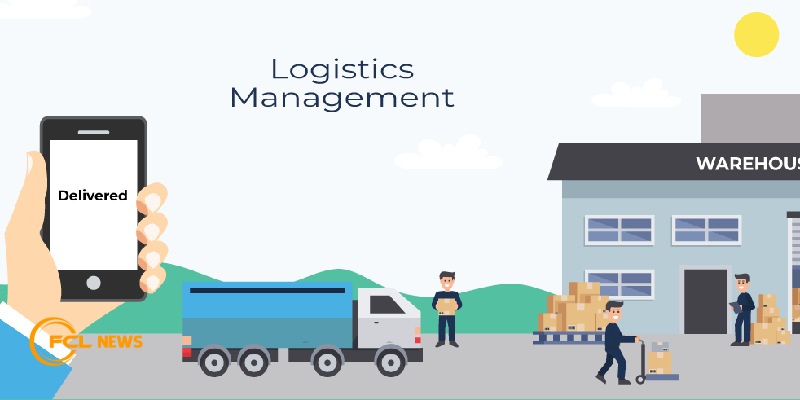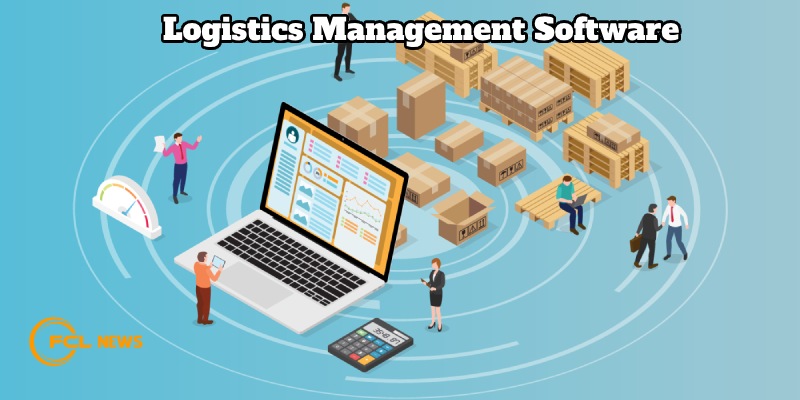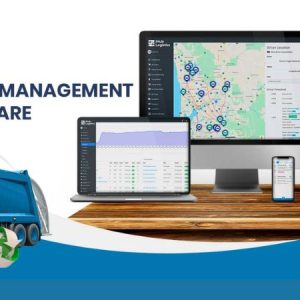Logistics Management Software is not just a modern tool, but is also at the heart of efficiency in supply chain management. Join us to explore the latest features, benefits and trends in this field, to better understand the importance of logistics management software in the modern business world.
Main features of logistics management software
Logistics management software typically offers a wide range of features to streamline and optimize various aspects of supply chain and logistics operations. Here are some main features commonly found in logistics management software:
Order Processing and Tracking
Automated order processing.
Real-time order tracking and visibility.
Order status updates and notifications.

Warehouse Management
Inventory tracking and management.
Warehouse space optimization.
Order picking and packing optimization.
Transportation Management
Route optimization for efficient transportation.
Carrier management and selection.
Freight cost calculation and optimization.
Demand Forecasting
Analyzing historical data to predict future demand.
Optimizing inventory levels based on demand forecasts.
Supplier Relationship Management
Managing and monitoring relationships with suppliers.
Automated communication with suppliers for order updates.
Data Integration and Analytics
Integration of data from various sources within the supply chain.
Advanced analytics for performance monitoring and decision-making.
Real-time Visibility
Real-time tracking of shipments and inventory.
Visibility into the entire supply chain for better decision-making.
Reporting and Analytics
Customizable reports on key performance indicators (KPIs).
Data analytics for trend analysis and strategic planning.
Compliance Management
Ensuring compliance with industry regulations.
Managing documentation and reporting requirements.
Collaboration Tools
Communication tools for collaboration with internal teams and external partners.
Shared dashboards and data access for stakeholders.
Risk Management
Identifying and mitigating risks in the supply chain.
Contingency planning for unexpected events.
Mobile Access
Mobile applications for on-the-go access to critical information.
Remote management capabilities for logistics professionals.
Automation of Routine Tasks
Streamlining routine tasks through automation.
Reducing manual data entry and processing errors.
Benefits of using logistics management software
The use of logistics management software provides various benefits for businesses involved in supply chain and logistics operations. Here are some key advantages:
Improved Efficiency
Automation of manual processes leads to increased operational efficiency.
Streamlined workflows and optimized resource allocation.

Enhanced Visibility
Real-time tracking and monitoring of shipments, inventory, and orders.
Improved visibility into the entire supply chain for better decision-making.
Cost Reduction
Optimization of routes and transportation leads to reduced fuel and transportation costs.
Efficient inventory management minimizes carrying costs and excess stock.
Accurate Order Fulfillment
Automation of order processing reduces errors and ensures accurate fulfillment.
Real-time order tracking improves order accuracy and customer satisfaction.
Inventory Optimization
Efficient inventory management minimizes stockouts and excess inventory.
Demand forecasting helps in maintaining optimal inventory levels.
Streamlined Communication
Improved communication with suppliers, carriers, and other stakeholders.
Collaboration tools enhance coordination among different teams.
Data-Driven Decision-Making
Advanced analytics and reporting tools provide insights for strategic decision-making.
Data-driven approach improves forecasting and planning.
Customer Satisfaction
Faster order processing and accurate order fulfillment enhance customer satisfaction.
Real-time visibility allows for better communication with customers.
Compliance and Risk Management
Ensures compliance with industry regulations and standards.
Identifies and manages risks through proactive monitoring.
Adaptability to Changes
Flexibility to adapt to changes in demand, market conditions, or disruptions.
Quick response to unforeseen events with contingency planning.
Time Savings
Automation of routine tasks and processes saves time for logistics professionals.
Reduces lead times and improves overall supply chain speed.
Scalability
Easily scalable to accommodate business growth or changes in the supply chain.
Adaptable to the evolving needs of the organization.
Optimized Resource Utilization
Efficient use of resources such as manpower, vehicles, and warehouse space.
Optimization algorithms contribute to better resource utilization.
Competitive Advantage
Provides a competitive edge by improving overall supply chain performance.
Enables businesses to respond quickly to market demands.

Trends and innovations in the field of logistics management software
The field of logistics management software is continually evolving, driven by technological advancements and changing industry needs. Several trends and innovations are shaping the landscape of logistics management software:
Integration of Artificial Intelligence (AI) and Machine Learning (ML)
AI and ML are being used for demand forecasting, route optimization, and decision-making.
Predictive analytics helps in anticipating issues and optimizing logistics operations.
Internet of Things (IoT) Integration
IoT devices, such as sensors on vehicles and in warehouses, provide real-time data for better tracking and monitoring.
Improved visibility into the supply chain with IoT-enabled devices.
Blockchain Technology
Blockchain ensures transparency and security in supply chain transactions.
Enhanced traceability, reducing the risk of fraud and errors.
Predictive Analytics for Maintenance
Predictive maintenance analytics for vehicles and equipment, minimizing downtime.
Preventive measures based on data analysis to reduce unexpected breakdowns.
Cloud-Based Logistics Solutions
Cloud-based platforms offer scalability, flexibility, and accessibility from anywhere.
Reduced infrastructure costs and easier implementation of updates.
Mobile Applications for Logistics Management
Mobile apps provide on-the-go access to critical logistics information.
Improved communication and real-time decision-making for mobile workforce.
Autonomous Vehicles and Drones
Use of autonomous vehicles and drones for last-mile delivery.
Increased efficiency and reduced delivery times.
Robotics in Warehousing
Automated guided vehicles (AGVs) and robotic systems for warehouse tasks.
Accelerated order fulfillment and reduced labor costs.
Augmented Reality (AR) and Virtual Reality (VR)
AR and VR applications for training, warehouse layout optimization, and order picking.
Enhanced training processes and improved accuracy in complex tasks.
Eco-Friendly Practices
Sustainable logistics solutions to reduce the environmental impact.
Green logistics practices, such as optimizing routes for fuel efficiency.
Advanced Data Security Measures
Increased focus on data security to protect sensitive information.
Implementation of robust cybersecurity measures to prevent data breaches.
Collaborative Logistics Platforms
Platforms that enable collaboration among different stakeholders in the supply chain.
Improved communication and coordination for seamless logistics operations.
Subscription-Based Models
Adoption of subscription-based models for logistics software services.
Cost-effective for businesses, especially smaller ones, with predictable expenses.

E-commerce Integration
Logistics software tailored for the specific needs of e-commerce logistics.
Integration with e-commerce platforms for seamless order fulfillment.
In conclusion
The use of logistics management software is not only a response to the increasing complexity of modern supply chains, but also the key to unlocking efficiency and flexibility in a challenging business environment. Logistics management software not only helps businesses save time and costs, but is also a source of motivation to improve service quality and strengthen relationships with customers.




